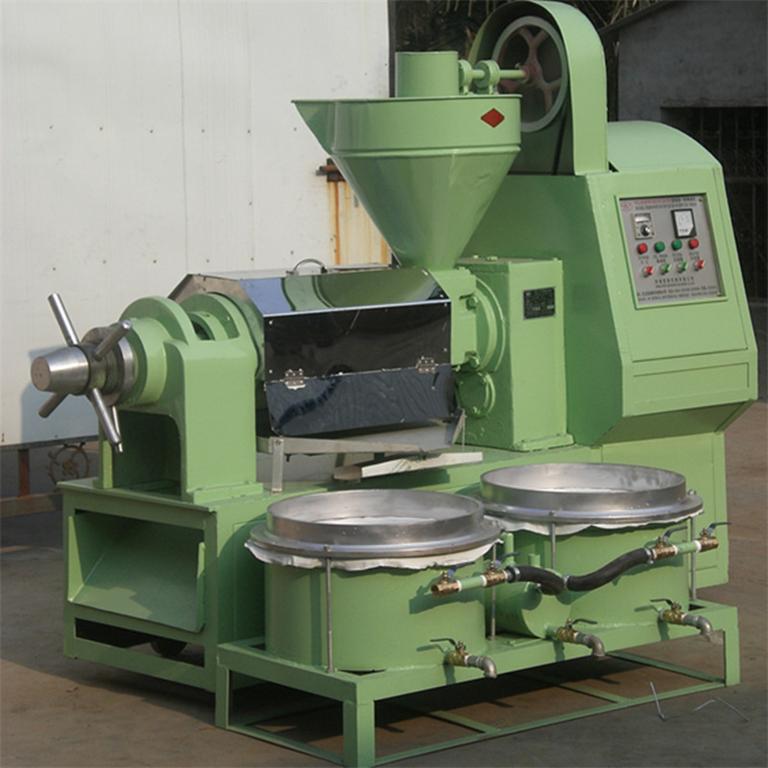
The oil yield of rapeseed is only 30%. Adopting the following skills can improve the oil output rate by 25%. The silt will be sifted away during the processing process, which will absorb oil and reduce the oil yield of rapeseed. The sediment should be removed before processing. As with the stove fire, the rapeseed is usually fried in a pan, and the rapeseed is poured out when the whole is cooked. Each time, 1.5-2 kg of rapeseed sticks to the bottom of the pan and is burnt. Therefore, when the rapeseed is fried to the eighth maturity, it is necessary to close the upper stove mouth and seal the lower tuyere to control the stove fire.
Specific operation skills: build a movable trough on the wall of the stove, insert a movable iron plate, when a big fire is necessary, lift the iron plate up to seal the furnace mouth; when it is necessary to simmer, put the iron plate down to seal the tuyere. When retrofitting the screw press to use the 95 horizontal shaft-driven oil press, the old No. 6 screw press can be used to replace the No. 5 screw press. If permitted, increase the internal pressure and move the oil outlet 8-10 cm. This improvement alone can produce 1-2 kilograms of oil per 100 kilograms of rapeseed.
The oil squeezer on the hot material is the most active in the low temperature. The temperature of the rapeseed just taken from the wok is 108°C, and the oil can be produced by squeezing it while it is hot. Therefore, the best control of the amount of fried seeds per pot is 40-50 kg, so that it can be squeezed as soon as it is fried to ensure that the hot material is squeezed. Like the blending oil, it is usually selected as essential ingredients such as soybean oil, rapeseed oil, peanut oil, sunflower oil, cottonseed oil, etc., and it can also be equipped with refined rice bran oil, corn germ oil, camellia seed oil, safflower seed oil, Special oils such as wheat germ oil.
The processing process is as follows: select the above two or more refined oils according to necessity, and then deacidify, decolorize, deodorize, and blend them into a blended oil. The shelf life of blended oil is usually 12 months. In the future, the growth prospect of blended oil is good, and it will become one of the favorite oil products of consumers.
After the raw material of the screw press enters the press chamber, under the influence of the twisting of the screw ribs, the feed end is gradually pushed toward the cake end. Because the bottom diameter of the snail rib is changed from small to large, the volume of each section in the press chamber is gradually reduced;
The material embryo is pushed into the pressing chamber, so that the product pressure is pushed backwards, and the material embryo is compressed and the oil is squeezed in. At the same time, adjust the gap of the cake to change the thickness of the cake. The smaller the gap, the thinner the cake, and the greater the pressure in the press chamber. In addition, the raw material is in a mobile state in the press chamber,
The friction between the material embryo and the row, the circle row, the material embryo and the pressing snail, the material embryo and the material embryo is formed, and a large amount of heat is generated, so that the temperature of the material embryo in the pressing chamber rises so that the oil in the unprofitable material embryo flows out. Improve the oil output rate. The pretreatment process must be completed before the material embryo is pressed
, The quality of pretreatment will directly affect the abnormality of the oil press and the oil yield. There are different pretreatment process requirements for different oils, but the tension includes the following items:
1. Screening: The oil entering the processing plant contains certain impurities. If it is not carefully cleaned, it will accelerate the abrasion of the external parts of the oil press, reduce the oil yield, and even cause defects and disturbances. The supporting equipment includes: sieve, stone removing machine, magnetic separator, etc.
2. Shell. Shelled oil should be peeled before pressing, so as to improve the production capacity and oil yield of the oil press. Its supporting equipment includes: peeling machine, separating screen, separating machine and so on.
3. rupture. Certain oils can be squeezed as a whole material, but they can be squeezed after breaking and rolling, which can significantly increase the oil yield. Its supporting equipment includes: cracking machine, rolling mill and so on.
4. Steamed and fried. Steaming and frying is the key to improving the oil yield. The commonly used method is to moisten the oil first, and then dry it in the wok, so that the oil reaches the squeezed water and temperature required by the process. The supporting equipment is: steaming pan Fried seed pot.
Copyright © Henan Zhongxing Grain And Oil Machinery Co.,Ltd. All Rights Reserved. Powered by MetInfo